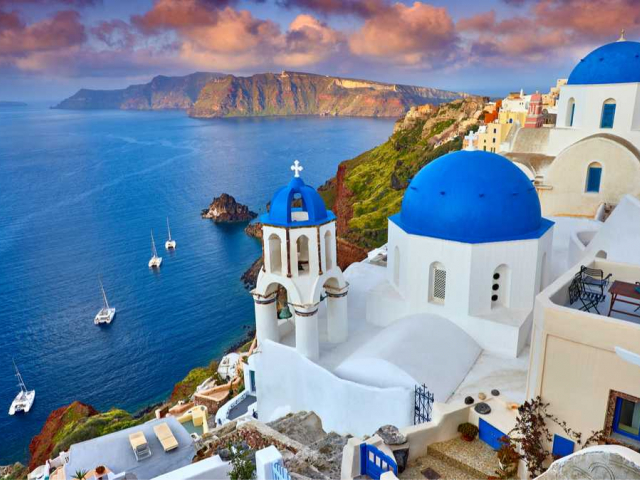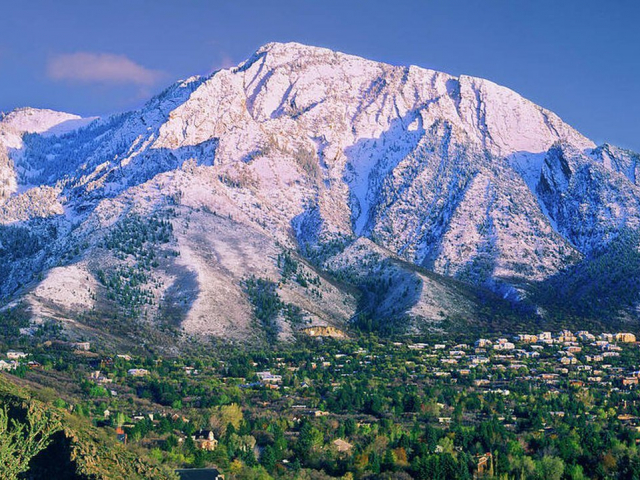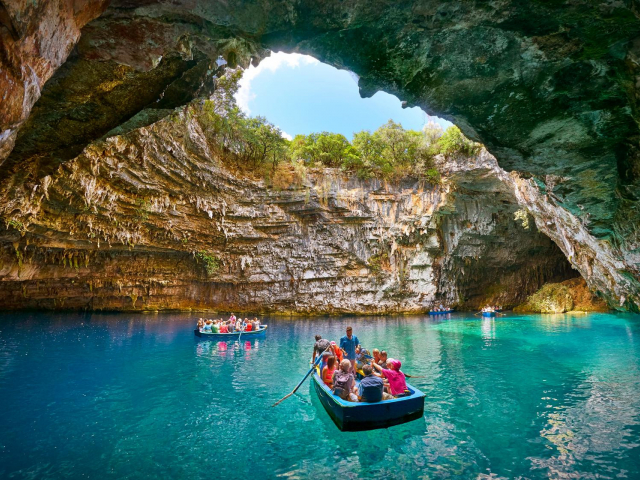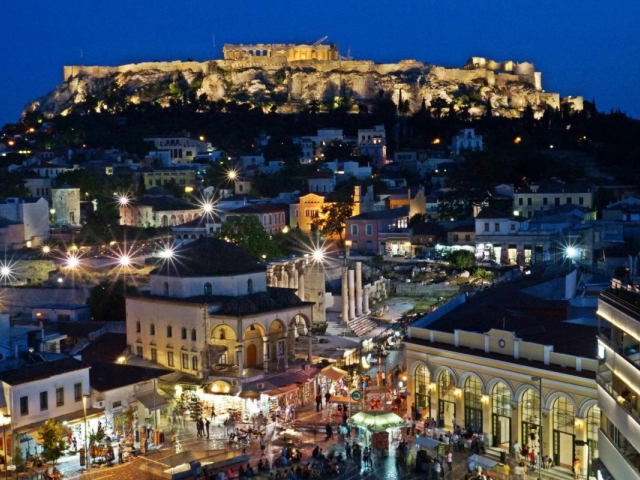
Santorini Island
Santorini is one of the most unusual and beautiful islands in Greece. The island has gained popularity thanks to neat white houses with blue roofs. In combination with colorful beaches, they create a fantastic atmosphere. Santorini is the only island in Europe where there are beaches with three different types of sand: white, red, and black. The last two types really impress people. Such a color of the sand could be explained by the presence of volcanic rocks in it.

Mount Olympus
The legendary Mount Olympus is one more unforgettable place that travelers aspire to visit. Mytikas is considered the peak of the mountain, with a height of 2,919 meters above sea level. It is almost half as high as Elbrus, but it makes a lasting impression. Olympus is the highest mountain in Greece, located in the northeast of Thessaly. To reach the peak, people can make use of tourist routes. On the way to Olympus, there are many cozy cafes and resting places.

Lake Melissani
Lake Melissani is the next amazing tourist route in Greece. It is the only underground lake in the country, located on the island of Kefalonia. The first mentions of Lake Melissani were found in ancient Greece. In 1951, it was discovered by Giannis Petrochelios, one of the locals. Nowadays, Lake Melissani is a center of attraction for tourists. The water in the 30-meter-deep lake is very clear, so it is easy to see the relief of its rocky bottom.

Athens
When traveling in Greece, it is impossible not to touch its unique history. The atmosphere of the past centuries is best felt in Athens, one of the oldest cities in the world. The history of Athens dates back to the second millennium B.C. In ancient times, it was the most important center of Greek culture. In 1458, the city was captured by the Turks. Later, Athens became part of the Ottoman Empire. There were frequent wars between it and the Republic of Venice. In 1687, Venetian artillery defeated the Parthenon, which was considered the center of unique architecture. In 1830, Greece gained independence. In 1832, the Kingdom of Greece was established, with Athens as its capital.

Ancient Theatre of Epidaurus
The Ancient Theatre of Epidaurus, which has been preserved since ancient times, closes the list of the top 5 matchless sights of Greece. This is the oldest of the active ancient theaters, erected in 340–330 B.C. In 1881, it was discovered by archaeologist Panagis Kavvadias. In this structure, the seats were distributed as follows: 34 lower rows were reserved for priests and rulers, and the next 21 rows were occupied by ordinary citizens. The theater's capacity is about 13 thousand spectators. Curiously, all the rows have survived to this day. In 1938, the first modern production took place. The performances were interrupted at the beginning of World War II and resumed only in 1955.
 Deutsch
Deutsch 
 Русский
Русский English
English Bahasa Indonesia
Bahasa Indonesia Bahasa Malay
Bahasa Malay ไทย
ไทย Español
Español Български
Български Français
Français Tiếng Việt
Tiếng Việt 中文
中文 বাংলা
বাংলা हिन्दी
हिन्दी Čeština
Čeština Українська
Українська Română
Română
